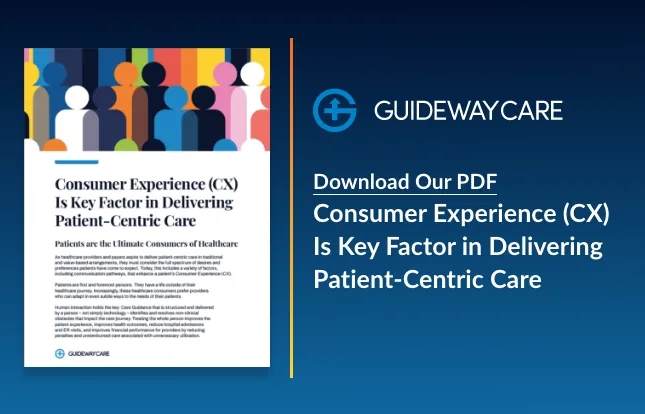What Will it Take to Survive the Nursing Crisis?

An Impact Study for Hospitals and Practices
Upended by a nursing labor crisis that does not show signs of abating, providers are looking to lay navigation as an effective solution to patient health outcomes and management.
Healthcare’s Chronic Condition—Nurse Staffing
The constant drone about pandemic-related staffing shortages has reached a kind of banality within the industry. But under the swirling current of news is a crisis that could have lasting consequences on provider operations, financial health, and patient outcomes. What appears to be a shift in power and compensation may be an operational upending that forces providers to make hard decisions and, in the end, increases healthcare costs for consumers.
Compounding pre-pandemic nurse shortages, hospitals have spent $24 billion to solve staffing-related gaps (Y. Tony Yang, 2022). Much of this is attributed to increased reliance on travel nurses. Before the pandemic, hospital staff nursing wages averaged $73,300 per year (approximately $1,400 per week). But travel nurses can be paid between $5,000 and $10,000 per week—a 2.6x – 6x jump depending on the market. While some states are alleging price gauging, it will be difficult to prove in the backdrop of unprecedented demand and the ongoing nursing exodus.
According to a recent report from the American Hospital Association, 95 percent of health care facilities reported hiring from contract labor firms, while open positions continue to rise. Labor expenses are up almost 20 percent from 2019 on a per-adjusted discharge basis. Meanwhile, operating margins are declining, with the median operating margin down nearly four percent since 2019. Much of this loss is due to the nursing labor shortage and related expenses, including purchasing additional supplies. And adding to the squeeze is the temporary shutdown of specific procedures or units within the hospital because of staffing gaps (American Hospital Association, 2022).
The labor market disruptions are propelling operating costs to unsustainable levels. Recently, AdventHealth reported that 2021 operating costs increased by $440 million, which was attributed to “early retirements, a surge in remote work, the mobility of nursing labor, and the resetting of wage rates across numerous job categories” (King, 2022). And Ohio University Health, which already invested $50 million in increased benefits last year, reported an additional $25 million in spending to support nursing salary increases (Mercadante, 2022).
Smaller community hospitals are also feeling the pain. According to a recent poll by the American College of Healthcare Executives (ACHE), community hospital CEOs cited the need for registered nurses (94%) and technical (85%) as the top concerns, outweighing other operational challenges (Muoio, 2022).
Physician practices have not been spared. While 2021 showed sizable gains in physician productivity, this was offset by increasing expenses and labor shortages:
“The median investment/subsidy per physician FTE was above late 2019 and late 2020 levels throughout 2021, rising to $263,001 for the fourth quarter, and was up 9.9% from $239,274 in the fourth quarter of 2020. The metric was up 5.9% compared to the third quarter of 2021, driven in part by a 16.3% year-over-year increase in total direct expense per physician FTE that mitigated physician revenue and productivity gains.” (Landi, 2022)
Practices are reporting staffing deficits near 25 percent. As patient demand increases and healthcare utilization rises, offices are busier than ever. The backlog of patients who delayed preventative care during the pandemic is causing a major spike that many practices find difficult to manage. (Valdez, 2022)
Aligning Resources to Patient Need and Provider Revenue
The answer to nurse staffing shortages is not more nurses. To drive operating costs down while maintaining and managing optimal patient outcomes, providers must better align resources to patient needs. This requires a deeper understanding of the challenges patients face and the type of resources needed to mitigate risk.
A patient’s health and wellness are largely determined by what happens outside the hospital. Nearly 60 percent of a patient’s risk is tied to social, environmental, and behavioral factors that fall outside the health system or care episode (Samantha Artiga, 2018). In a study of 1066 readmitted patients, more than half (52%) experienced difficulty in more than one self-care domain, including transportation, education, food insecurity, and housing instability (Greysen SR, 2017). In another study on the impact of a lay-health worker model on 30-day readmission rates in Appalachia, Kentucky, scheduling challenges, medication adherence, and transportation gaps were cited as the most common barriers to compliance with a prescribed care pathway (Roberto Cardarelli, 2018). And in a recent Guideway Care analysis of close to 1000 navigated patients, the two biggest drivers behind readmissions were scheduling follow-up appointments and medication adherence, both of which are heavily influenced by transportation needs and financial challenges.
More often than not, nursing resources are asked to find and address the practical concerns driving patients back into the hospital and contributing to avoidable deterioration. However, the model is unstainable, expensive, and adds to nursing stress and dissatisfaction.
Lay navigation delivered by non-clinical care guidance resources can mitigate the cost and quality challenges while serving as a 5x multiplier on existing nursing staff capacity. A recent cost comparison examined the patient impact and cost comparison between a nurse on staff (non-itinerant) and a lay navigator. Based on salary cost averages (adjusted for inflation) and patient volumes, lay navigation can address practical barriers at five times the volume and 20 percent the cost of a nurse resource.
| TABLE 1. PATIENT IMPACT AND COST COMAPRISON BETWEEN NON-ITINERANT STAFF NURSE AND A LAY NAVIGATOR | |||
|---|---|---|---|
| Resource | Number of Patients | Cost/Patient | |
| Per Month | Annually | ||
| Nurse | 50 | 600 | $162.50 |
| Lay Navigator | 250 | 3,000 | $35.00 |
An additional analysis of lay navigated patients showed that care guides addressed more than 80 percent of the practical barriers identified. And of that proportion of barriers identified, more than 98 percent were fully resolved.
Lay navigation also effectively addresses the transition of care and communication challenges, such as not fully understanding discharge instructions. In two months, care guides increased patient satisfaction scores by an average of 10 points, which resulted in an average percentage improvement in Hospital Consumer Assessment of Healthcare Providers and Systems (HCAHPS) survey scores of more than 15 percent.
The benefits extend to practices that can leverage care guides to ensure appointment adherence, manage referrals and patient questions, and navigate insurance pre-authorizations. In a recent analysis of managed and un-managed patients, participating providers realized a 12 percent increase in kept appointments. And the new patient pipeline for elective surgery consults increased by 15 percent.
Realizing the Lowest Total Cost of Performance
Provider margins will continue to shrink as labor and resource demands skyrocket. And while many in the industry are calling for the end of healthcare as we know it, there are opportunities that have yet to be fully realized. In this climate, we will see providers driving to new ways of lowering costs while maintaining and managing patient health.
The concept of aligning patient gaps to lower costs and more efficient resources drives performance at the lowest possible cost. Operating at the lowest total cost of performance requires an alignment between skill, technology, and need. As providers continue to grapple with nursing challenges and a volatile labor market, incorporating lay navigation through care guides is a sustainable, cost-effective option to improve care and increase nurse capacity. By moving practical barrier resolution and care navigation to lower cost, non-clinical resources, providers can improve the patient experience of care, lower costly events like readmissions, and free nursing capacity so that expensive resources can work at the top of their licensure.
Works Cited
American Hospital Association. (2022, January). Data Brief: Workforce Issues Remain at the Forefront of Pandemic-related Challenges for Hospitals. Retrieved from American Hospital Association: https://www.aha.org/system/files/media/file/2022/01/Data-Brief-Workforce-Issues-012422.pdf/
Greysen SR, H. J. (2017). Understanding patient-centered readmission factors: a multi-site, mixed-methods study. BMJ Quality & Safety(26), 33-41.
Jacobs, A. (2022, January 23). A Shrinking Band of Southern Nurses, Neck-Deep in Another Covid Wave. Retrieved from The New York Times: https://www.nytimes.com/2022/01/23/health/covid-mississippi-nurses.html
King, R. (2022, January 10). JPM 2022: Staffing expenses led to an extra $440M in operating costs in 2021 for AdventHealth. Retrieved from Fierce Healthcare: https://www.fiercehealthcare.com/hospitals/jpm-day-1-staffing-expenses-led-to-extra-440m-operating-costs-2021-for-adventhealth
Landi, H. (2022, February 1). Physician practices make revenue gains in 2021 but face mounting expenses, and labor shortages. Retrieved from Fierce Healthcare: https://www.fiercehealthcare.com/providers/physician-practices-make-revenue-gains-2021-face-higher-expenses-labor-shortages
Mercadante, N. (2022, February 7). OU Health to invest millions for nurses. Retrieved from KSWO: https://www.kswo.com/2022/02/08/ou-health-invest-millions-nurses/
Muoio, D. (2022, February 4). Hospital CEOs: Workforce shortages outweigh financials as top concern in 2021. Retrieved from Fierce Healthcare: https://www.fiercehealthcare.com/hospitals/hospital-ceos-workforce-shortages-outweigh-financials-top-concern-2021
Roberto Cardarelli, M. H. (2018, February). Reducing 30-day readmission rates in a high-risk population using a lay-health worker model in Appalachia Kentucky. Health Education Research, 33(1), 73–80.
Samantha Artiga, E. H. (2018, May 10). Beyond Health Care: The Role of Social Determinants in Promoting Health and Health Equity. Retrieved from KFF: https://www.kff.org/racial-equity-and-health-policy/issue-brief/beyond-health-care-the-role-of-social-determinants-in-promoting-health-and-health-equity/
Valdez, B. (2022 , February 4). The crisis in healthcare staffing. Retrieved from Medical Economics: https://www.medicaleconomics.com/view/the-crisis-in-healthcare-staffing
Y. Tony Yang, D. J. (2022, January 28). COVID-19’s Impact On Nursing Shortages, The Rise Of Travel Nurses, And Price Gouging. Retrieved from Health Affairs Forefront : https://www.healthaffairs.org/do/10.1377/forefront.20220125.695159/
Contact Us Today To Learn How We Can Help
"*" indicates required fields




